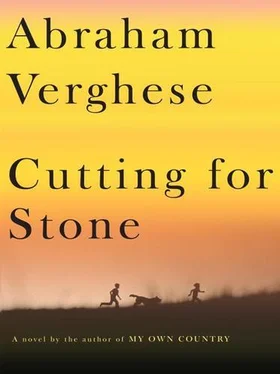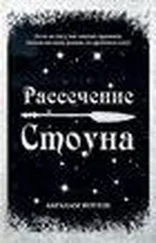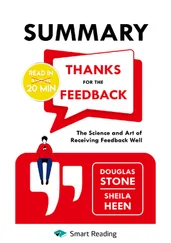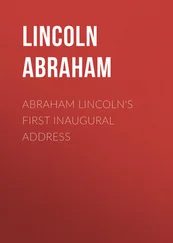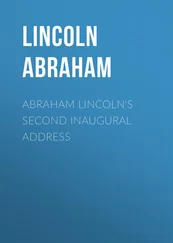We could stop and take a breath.
“Are we catching up on blood?” I asked Ronaldo.
“We never catch up,” he said. When I kept staring at him, he shrugged; he nodded at his dials as if to say things were no worse than when we began—that's what I hoped he had said.
Now I carefully removed the packs, starting with the spots where the bleeder was least likely to be. The pelvis was clean—no gusher there. Off came the pack around the spleen. If the patient's belly was a room, the furniture—the most movable, central structures—had been pulled out so we had a good view to the rear. If there was a bleed from a torn aorta or its branches, then this back wall of the abdomen—the retroperitoneum—would have shown a big ugly swelling, a hematoma. But that was clean, too.
I had a premonition that we would find the bleeder behind the liver. A place full of shadows, hard to see or fix. This was where the inferior vena cava, the largest vein in the body, carried blood back from the lower limbs and trunk, running through and behind the liver on its way to the heart. While coursing through the liver, it picked up the stumpy, taut hepatic veins that drained that organ.
I took the pack away from the liver. Nothing.
I gently pulled the liver forward, to look at its dark side.
An angry gush of blood filled the empty bowl of the abdomen. I hastily pushed the liver back, and the pumping ceased. Things were all right as long as we didn't touch the liver. What was it that Solomon, operating in the bush, had called this? The injury in which the surgeon sees God.
“Okay,” Deepak said, “let's leave it like that.”
“What now?”
“He's oozing from the skin incision and from all the IV sites. His blood isn't clotting.” Deepak had a soft voice, and I had to lean over to hear him. “It's inevitable with this much trauma. We open them up, pour fluids into them, and the body temperature drops … We have diluted the clotting system so it stops working. Let's pack around the liver and get out. Put him in ICU where we can warm him up, give him more fresh frozen plasma and blood. In a couple of hours, if he's alive, if he is more stable, we can come back.”
I sandbagged the liver and fed the small bowel back into the wound. Instead of suturing the skin, we used towel clips to hold the wound edges together.
“The transplant teams will be here to harvest the corneas, heart, lungs, liver, and kidneys from the man he shot,” Deepak said. “This theater is bigger, and I'll let them have it.”
IN THE INTENSIVE CARE UNIT, two hours later, the oozing from the puncture wounds ceased. The cluster of poles and machinery around the bed made it tricky to get near Shane Johnson Jr.—that was his name. His family was in the waiting room, trying to fathom the unfathomable. Fresh frozen plasma, warmed blood, and fluids had given Junior a recordable blood pressure and a respectable temperature. He was alive, but just barely.
“Okay,” Deepak said after reassessing the patient, and looking at the clock. “Let's go take another look.”
This time we were in the smaller operating room. Ronaldo was still all gloom. Junior's face and limbs were puffy, his capillaries leaking out what was being poured into him. But we still had to pour fluid in to keep a blood pressure—it was like keeping a bucket full despite the holes in its side.
Deepak insisted that I be on the patient's right again. It took just seconds to remove the drapes, swab his skin, and pop open the towel clips that held the skin edges together. I removed the packs.
Deepak guided my fingers to the stalk of vessels that led into the liver. “Okay,” he said. “Squeeze there.” This was the Pringle maneuver. I squeezed, choking off the blood supply to the liver, while Deepak removed the last pad and lifted the liver forward. Blood gushed out at once, turning the dry clean field into a sopping red mess.
“Okay, you can let go,” he said, pushing the liver back. “That's what I was afraid of. The vena cava is torn for sure. That's why, even with the Pringle maneuver, it still bleeds.”
In some people, the inferior vena cava barely indents the back of the liver. In our patient, the vena cava was swathed by liver like a pig in a blanket. When Junior went airborne, then hit the pavement, his liver kept traveling; its momentum tore the short veins that anchored it to the vena cava, leaving a jagged rent.
Deepak asked for a suture on a long needle holder. At his signal I pulled the liver forward, and he tried to put the needle in one end of the tear. But before he could even see it, the field was awash with blood.
“God,” I said, violating a cardinal rule about keeping quiet when assisting, “how do we fix this?”
Deepak said, “Oh, it's easy to repair the cava—it's just that the liver is in the way.” It took me a second to realize this was as close as Deepak came to joking during surgery.
He was silent for a good while, almost in a trance, and I tried not to make a sound. At last, like a priest finishing a prayer, he moved. “Okay,” he said. “It's a long shot. Let's switch sides.”
I was unprepared for what followed. All I could do was marvel and be the best second pair of hands that I could be. Deepak swabbed Junior's chest, then cut vertically down over the breastbone from top to bottom, then ran an electric saw in the same groove. The smell of burning flesh and bone hung in the air. Suddenly the chest popped open like an overstuffed suitcase.
I didn't ask what he was doing. He didn't explain. My exposure to chest surgery had consisted mostly of draining fluid collections outside the lung or, rarely, watching Deepak resect a cancerous lobe. Three times during my internship we had cracked the chest and oversewn a stab injury to the heart. One of the three survived. This was one of the deficits in our program, one of the reasons we were being shut down: we had to ship off much of the thoracic surgery, not to mention much of the urology and plastic surgery, to other hospitals.
Junior's heart, a fleshy, yellow-streaked mass covered by the pericardial sac, was exposed, pumping away, as it had done for all his nineteen years. It had never been more threatened. Deepak cut open the pericardium.
I was aware of activity in the operating room behind me and in the scrub area that was shared. At one point, I looked around, and through the three sets of windows, I saw a crowd of white faces around the other operating table.
Deepak put a purse-string suture around the right atrium, the upper chamber of the heart that received blood from the vena cava. He took a chest tube and cut side holes in it with scissors. Now he made a nick in the atrium of the heart, in the center of his purse-string suture. Then he slid his newly fashioned tube into the atrium, using the purse string to cinch the tissue around the tube which he pushed down through the orifice of the inferior vena cava, and down to where our problem was.
“Tell me when it reaches the level of the renal veins,” he said.
I saw the inferior vena cava distend, like a garden hose filling with water. “Now,” I said.
“The tube serves as a stent for the inferior vena cava,” Deepak said, leaning over to look from below. “It's also a crude bypass so blood from the trunk can return to the heart while we make the repair. Now … let's see if we can fix this.”
He adjusted the overhead lights. When I lifted the liver, the bleeding was much less than before, and what's more, the torn edges of the vein were visible on the backdrop of the tube. Deepak grabbed one edge of the tear with long forceps and passed the curved needle through and then grabbed the other edge, passed the needle through that and out, and tied a knot. I let the liver back down. It was a laborious process: lift, grab, pass needle, mop, pass needle to other side, mop, tie, relax the pull on liver.
Читать дальше
